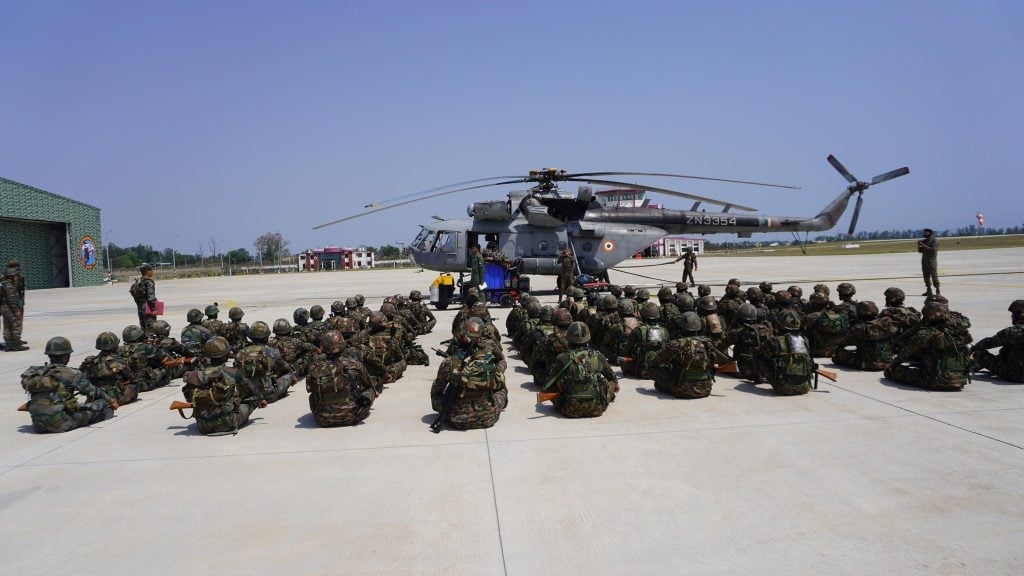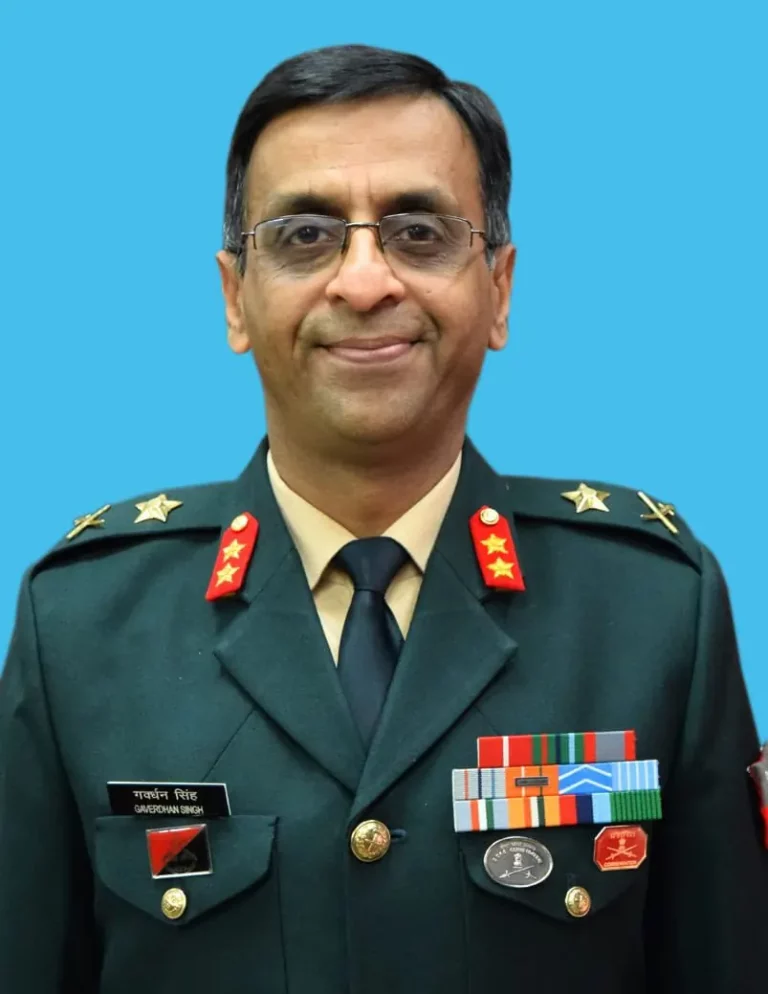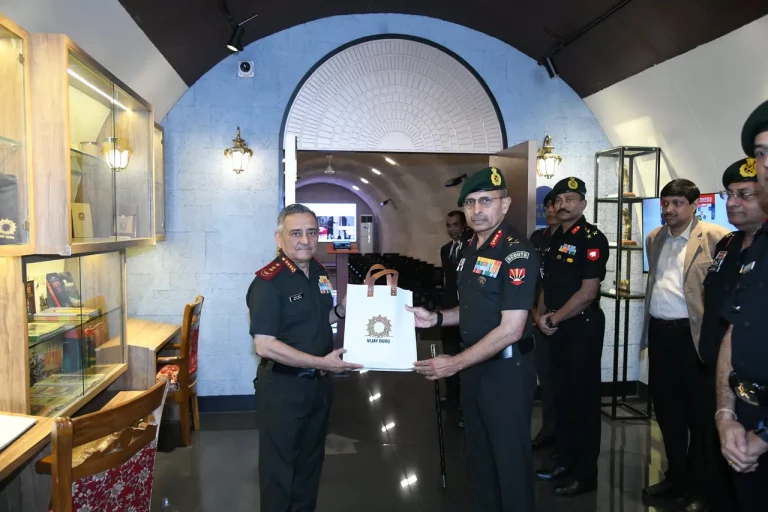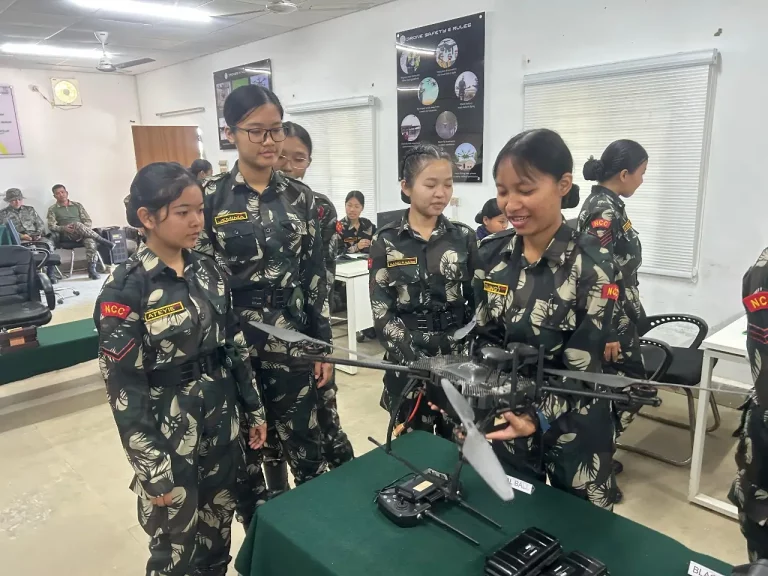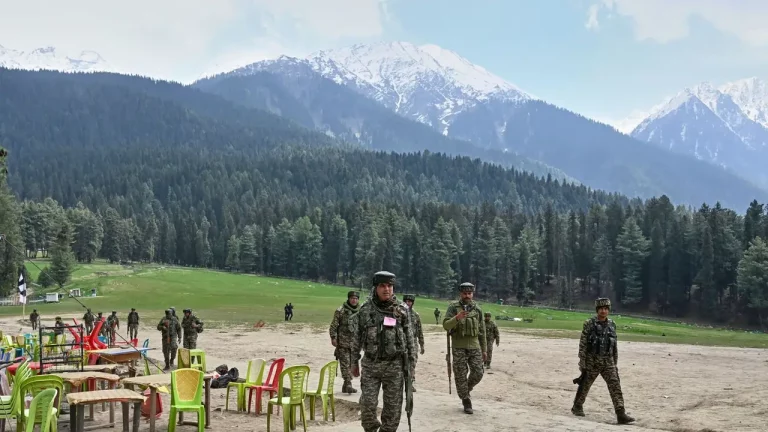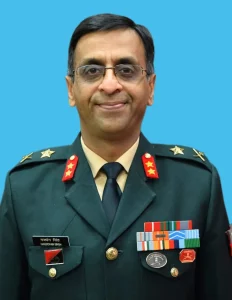The Indian Army’s Panther Division, part of the Vajra Corps (XI Corps), collaborated with the Indian Air Force (IAF) to conduct a high-intensity Special Heliborne Operations (SHBO) exercise aimed at refining air-land coordination procedures. This operation, which showcased the rapid deployment capabilities of troops in collaboration with a Mil Mi-17 helicopter, emphasized tactical precision and the significance of joint military maneuvers.
Held at an airbase under clear skies, soldiers from the Panther Division prepared for deployment, practicing skills such as rappelling from the hovering Mi-17 helicopter. This exercise underscores the Indian military’s commitment to enhancing joint operations, a vital aspect of modern warfare. The initiative reflects the growing importance of integrated operations among the Army, Air Force, and Navy to secure India’s borders and execute effective tactics.
The Vajra Corps, headquartered in Jalandhar under the Western Command, has a rich history of defending India’s western frontier. Established post-independence in 1947 to address threats from Pakistan, the Corps has been pivotal in various conflicts, including the 1971 Indo-Pak War. There, coordinated air-ground operations carried out with support from over 7,000 IAF sorties significantly reduced casualties. Insights gained from previous conflicts, particularly the 1999 Kargil War’s Operation Safed Sagar, where MI-17 helicopters were repurposed for high-altitude combat, continue to guide such modern exercises.
The Mi-17 helicopter, a Soviet-designed asset in the IAF’s arsenal since 1975, remains central to operational effectiveness. Its reliability in challenging terrains such as Kargil and Sikkim has cemented its role in troop transport and combat support, despite past incidents like the 2017 crash in Arunachal Pradesh due to a friendly fire incident involving a SPYDER missile, which resulted in seven fatalities.
This joint exercise builds upon recent drills, including a Tri-Services helocasting and underwater diving exercise conducted in Sikkim, reflecting the armed forces’ unwavering dedication to unified operations. As India progresses toward a theatre-based approach to military organization, such exercises are crucial to ensuring forces are prepared for complex air-land operations with high efficiency.
With the IAF and Army continuously modernizing their capabilities—drawing on experiences from the Kargil conflict to incorporate advanced platforms like the Sukhoi Su-30MKI—this operation reinforces India’s strategic focus on integrated defense measures. This commitment ensures the nation can safeguard its sovereignty and maintain operational readiness along its borders, adapting to the challenges of modern warfare.
